“Moreover, almost all of the Alans are tall and handsome, their hair is generally blond, and their eyes are frighteningly fierce; the speed of their attack is heightened by the lightness of their weapons, and in every respect they are somewhat like the Huns, but they are less savage in their habits and way of life. As wandering plunderers they range as far as the land of the Medes and Armenia, usually enjoying the delights of a somewhat civilized life.”
“They do not know the meaning of slavery, since all are born of noble blood, and moreover they choose as chiefs those men who are conspicuous for long experience as warriors”
~ Ammianus Marcellinus, Res Gestae
The Alans are a mysterious, largely forgotten, yet extraordinarily important people.. mysterious in part because we have essentially nothing about them written in their own words, or from their own perspectives.. but the story we’re able to piece together via the words of others is a fascinating tale.
Their very name speaks to their clear Aryan heritage, with “Alan” almost certainly being a direct derivative of the word Aryan, and they clearly represent a significant branch of this unprecedented people family.
Ranging from the Pontic Steppe and the Caucasus, as far east as China, as far west as Spain and North Africa, and so many regions in between, leaving significant genetic and cultural traces throughout Europe—most notably in the Jászság Region of Hungary and in Orléans, Valence, and the Iberian Peninsula—their history is so wide-ranging that it’s almost difficult to believe.. and even more difficult to cleanly pin them down and quantify them as a people.
Many scholars don’t even try, and joining this modern trend of pretending the ancestors of modern Europeans have little to no connection to the happenings in India, Persia, ancient Anatolia, Greece, Mesopotamia, and the Pontic Steppe, the Alans have joined the Goths and Scythians in being quietly shuffled away into a black hole of history.
In this article, I hope to do them a bit more justice and speak to their fascinating historical journey.
Fractured History
One of the biggest failings of modern scholarship—giving the benefit of the doubt and presuming there isn’t something akin to a malevolent conspiracy involved at some level here—is in this tendency to avoid viewing history through a racial or ethnic lens at any and all costs, even if it’s by far the most helpful, useful, or logical lens. We’re now taught to ignore it.. to pretend it’s unhelpful, or unimportant.
Peoples with the closest possible genetic and ethnic heritage will often be treated or framed as almost totally distinct peoples, despite having so clearly emerged from the same root and stem, making what could be a relatively cohesive and sensible storyline and historical context picture into a hopelessly fractured and exceedingly complex Byzantine labyrinth.
I think it’s obvious why this is the case: the theory that a singular people family was so dominant, powerful, widespread, and all-pervasive, in both a cultural and racial sense, is one that post-WWII scholarship simply isn’t willing to entertain.. even within their own minds, let alone actively communicate to the world at large.
The Scythians are a prime example of this. Once a term used almost universally to speak to the collective sum total of nearly every branch of the Aryan or Indo-European people family, it has gradually been fractured, minimized, and redefined—aggressively in recent decades—to the degree that it’s now frequently used in academic circles to only reference heavily mixed Turkic or Asiatic people groups, and thus they’ve become ever less ancient and less significant as time marches forward and historical scholarship reorients all things in this sphere.
From once practically being a racial or ethnic descriptor, synonymous with “White” or “Aryan,” with Greek, Persian, Indian, and Anatolian sources all openly speaking to their Scythian heritage, it’s being reconstituted into an incredibly narrow term used to refer to tiny, multiracial steppe tribes of the sort that merely occupied the Scythians’ wake after the bulk of them had long since left the areas.
It’s a most aggressive muddying of waters, whether purposeful or not, and our broader history and progression/development can’t possibly make sense until we’re able to sort this out and attain some clarity here, and begin to use these terms as all ancient historians did—in a correct and accurate fashion, unburdened by political-correctness considerations, unaffected by poisonous “anti-racist” Marxist garbage, and the wholesale reorienting of history it encourages.
The Scythian Connection
The Alans were, like so many of their neighbors and peers, a Scythic people:
“The Alani—a race of Scythians, as we have somewhere remarked, inhabiting the country about the lake Maeotis and the river Don—having made an irruption into Media and the parts beyond it, with the view of plunder, became masters of a large extent of country..”
~ Flavius Josephus, The Jewish War, Book VII, Chapter 7, Section 4
In fact, according to Lucian, the only significant characteristic distinguishing the two is the way each wears his hair; the Scythians wear it longer than do the Alans.
But they weren’t just Scythic; they were also frequently known and referred to as the Massagetae.
Ammianus Marcellinus, a 4th-century Roman historian, noted that the Alans were “formerly called Massagetae,” and Dio Cassius wrote, “they are Massagetae,” implying an amalgamation of Iranian peoples, including Sarmatians, Massagetae, and Sakas, reinforcing their Central Asian roots.
The prefix “massa-” in Central Asian languages like Middle Persian and Avestan means “great,” “heavy,” or “strong.” This suggests that “Massagetae” could mean “Great Getae” or “Strong Getae.” Many authors of our oldest histories drew this obvious connection:
“The Massagetae are in origin from the tribe of the Scythians, and are called Massagetae, as if heavy, that is, strong Getae.”
Source: Rabanus Maurus, De Universo,
Herodotus tells us, “The Getae are the most courageous and just of the Thracians,” and several other authors, including Jordanes himself in the only surviving Gothic history, connect the Getae directly to the Goths, speaking of them as one and the same.
What this clearly seems to indicate is that Scythian, Goth, Getae, Massagetae, Thracian, and Alan are all vestiges of a singular people family.
To clear up any further doubt, a few more quotes to make these connections—at least from the perspective of those who wrote these histories—undeniable:
“Now the Massagetae are said to be a great and warlike nation, dwelling eastward, beyond the river Araxes, and are regarded as a Scythian race.”
“In their dress and mode of living the Massagetae resemble the Scythians. They fight both on horseback and on foot, neither method is strange to them.”
~ Herodotus
From this point [at the Danube] all the peoples are, generally speaking, Scythian, although various specific groups hold the lands adjacent to the riverbank: in one place the Getae, known as Dacians by the Romans, in another area the Sarmatians, who are “Sauromatae” to the Greeks, in particular the Sarmatians known as Hamaxobii or Aorsi; in another zone dwell base-born Scythians, descended from slaves, and even cavemen [Troglodytae]! Close beyond to the north dwell Alani and Roxolani.
~ Pliny the Elder, Natural History
As I’ve mentioned elsewhere, and it’s something I think is incredibly crucial to grasp to best understand the larger context picture, the Scythian/Gothic/Aryan people family seemed to be a massive conglomerate of peoples, largely independent unless a singular threat forced their unity, with a “Royal” or noble caste frequently at their epicenter.. an epicenter essentially protected by several related peoples on all sides, each willing to muster armies of a characteristic type to combine forces into a larger army, if the situation demands it. I should clarify that at the moment this is my own personal theory, and I’m not sure many academics and historians would yet fully agree—or at least, not phrase or frame it this way—but it’s based on quite a few historical accounts, coupled with a small intuitive leap that makes most sense as the simplest explanation.. and I’m now confident, and think I’ll be fully vindicated here at some point in the future as we’re able to definitively connect more of these dots in a less politically driven and politically charged atmosphere and scholarly environment in coming decades.
The characteristic trait of these Aryan peoples is a simultaneous fierce independence and a going of their own way, but a clear recognition of heritage and kinship, and a willingness to often set this independence aside when threatened by late Persian, late Roman, or late Hun. I add ‘late’ here very consciously - this larger Indo-European and Aryan family seemed to have strong ties with the earliest manifestations of all three of these peoples, before cultural and ethnic admixture caused them to slowly morph into something quite different.
One of the most important factors of all, if we care to learn and understand history through a far more accurate and clarifying lens, involves noting this powerful interconnectedness of peoples that modern scholarship seems devoted to seeing as wholly distinct and separate.
‘Goth’ and ‘Scythian’ is prime example.
It’s not just that countless histories use the terms “Goth” and “Scythian” practically interchangeably, or that Jordanes (of Gothic heritage himself) makes it clear that the Goths are Scythians, or that the Goths appear in the region of the “Royal Scythians” the moment the Scythians largely disappear from history. It’s an overall context picture of history that’s led me to see this Gothic/Scythian connection as simply undeniable.
I say this to make the point that if these Alans are a Scythic people, as they so clearly seem to be, this also powerfully connects them to the Goths—a people who played the most foundational role in the history and creation of modern Europe and its cultural and ethnic bedrock.
To those of us of European descent, these Alans you’re about to hear of are your kin— not some strange, exotic, Far Eastern tribe of wild men who appeared from nowhere and subsequently disappeared from the stage without leaving much trace, but rather a people who contributed immensely to our culture, heritage, and history—and an exceptional people who deserve to be properly understood.
Who Were These Alans?
It might be fairly said that the Alans were among the most truly free people in all of history throughout the vast majority of their existence. They essentially lived under the stars, moved whenever conditions warranted and a better life might be found elsewhere, and took the steppe manner of living to the extreme—likely because they played the foremost pioneering role in developing it:
“They have no cottages, and never use the plough, but live upon flesh and an abundance of milk, and dwell in wagons, which they cover with rounded canopies of bark, and drive over the boundless plains.”
“They are not subject to the toils of agriculture, nor do they know anything of nautical affairs; but, living a wandering life, they roam over vast regions, and, being supported by pillage, they are formidable to the neighboring nations by their agility and rapidity of movement.”
~ Ammianus Marcellinus, Res Gestae, Book XXXI, Chapter 2
I’ve spoken previously of two major branches of the Aryan peoples: one who might best be represented by a ship’s helm, representing their long history of ocean mastery, trading, and exploration, and the other by a wagon wheel, as a very much land-focused steppe people. The Alans seem to uniquely belong in this latter category.
They were certainly a bit more rough around the edges relative to what we know of the customs, traditions, and manners of living and being of the “Royal Scythian” population, and seem to resemble a hardy mixture of a Scottish Highlander, Scotch-Irish type, or Appalachian Americans, and were exceedingly courageous and capable warriors accordingly—exhibiting a unique martial spirit that inspired both fear and respect from all who knew them. Yet this unique approach to life allowed them to maintain an energy and vitality and toughness that helped them rise to any challenge, and be more than a match to all around them. In shaping themselves this way, I’d suggest they became the borderland guardians of Aryan culture, in a sense.. the slightly more wild and primal martial element that allowed for (and protected) the development of a more ‘civilized’ kin they so clearly felt common cause with.. which is the very role of a warrior.
To the Alan, it wasn’t violence that was degenerate, but the cowardly inability or unwillingness to manifest this violence where most necessary and just:
“Just as quiet and peaceful men find pleasure in rest, so the Halani delight in danger and warfare. There the man is judged happy who has sacrificed his life in battle, while those who grow old and depart from the world by a natural death they assail with bitter reproaches, as degenerate and cowardly; and there is nothing in which they take more pride than in killing any man whatever: as glorious spoils of the slain they tear off their heads, then strip off their skins and hang them upon their war-horses as trappings.”
~ Ammianus Marcellinus, Res Gestae
And these horses of theirs were undoubtedly some of the best in the world—Caesar himself rode the famed “Borysthenes the Alan,” a small hint of just how strong the demand was for their beasts—exceedingly well-trained and well-bred, rarely would Alans be found not riding atop them, expertly wielding bow or spear with an unmatched proficiency.
The later Winged Hussars would upgrade this spear to a lance and this bow to a firearm, but the level of battlefield dominance would remain a constant.
Raiding gradually became a favored pastime, much like the Vikings, and they’d become expert at it. They were avid and enthusiastic hunters and enjoyed the chase, and were pioneers in the creative employment of help in the hunting process:
“They became known in retrospect for their massive hunting and fighting dog of Molosser type, the Alaunt, which they apparently introduced to Europe. The breed is extinct, but its name is carried by a Spanish breed of dog still called Alano, traditionally used in boar hunting and cattle herding.”
Source: Alans - Wikipedia.
Like other Scythian peoples, the Alans came to dominate the art of steppe warfare, using their incredible mobility coupled with well-crafted weapons to everywhere take fights on their own terms and be able to engage in strategic retreat at the drop of a hat. Several accounts record them being excellent at feigned retreats, as so many Scythian peoples were said to be, only to then turn and massacre their foe the moment the pursuing line became disorganized, tired, or over-eager. Enemies would slowly learn from their mistakes and adjust accordingly, but these techniques proved brutally effective for long periods.
Fascinatingly, they were also experts with the lasso in combat.
During a significant war, an Armenian king is noted to have just barely salvaged his life, possessing the quick reaction time to cut the rope seconds before he’d have been dragged off his horse to his death.
Even still, Armenia, Rome’s satellite to the north, was forced to purchase an Alan withdrawal from its territory with “gifts,” reportedly an exceedingly high price, which was said to be the far more important reason the Alans allowed them to live in peace than any fear of Rome’s military force.
This seemed the epitome of a fearless people, and large groups of individually collected Alans, seeking to make their way in the world, would often be employed as elite guards in camps of kings, princes, and emperors.
Or, queens. The Massagetae branch of this family has gone down in history in large part due to their Queen Tomyris famously leading her people to defeat Cyrus the Great in 530 BCE. According to Herodotus, after Cyrus captured her son through deceit, Tomyris vowed revenge, and in the battle, she killed Cyrus, reportedly dipping his head in blood as a symbolic act.
The Amazons, too, are thought to be strongly connected to the Sarmatians, from whom the Alans descend—a group of women whose men seemed to have marched off to war and never returned, forcing them to make a choice: become captives and slaves to nearby (potentially non-Scythian) tribes or learn to fight. They certainly did the latter to the degree that they’ve become legendary, mentioned by several sources with fascination.
Regardless of where they found themselves throughout their history, they never lost their steppe “edge,” their simple and hardy mode of living that helped them maintain such impressive strength and vitality. It’s said that on especially long rides when food and drink were exceptionally scarce, they were known to drink the blood of their horses—a practice continued by Genghis Khan and his Mongols so many years later.. and likely, an inherited custom.
One of a great many.
Steppe Cousins Become a Problem
Both Hun and Mongol would draw a great deal from these masters of the steppe, not merely cultural elements or aspects of martial expertise, but likely much of their very DNA and lineage. The leadership ranks of both Mongol and Hun had considerable Indo-European blood, and these Alans and their brother peoples in the region were likely the source.
When the Huns would later come barreling toward Europe from the east, the Alans would take advantage of these relationships to form truces—the result being that the Goths then became the foremost target of the rampaging Hun.
Regarding the Huns, “The Alans, however, were their equals in battle, but unlike them in their civilisation, manners and appearance.”
~ Jordanes, Getica
Many Alanic peoples that were overrun by the massive Hunnish incursion would even eventually make common cause and be compelled to join forces in their push westward.
Gradually, over time, the intermixture became so pronounced that by approximately the 6th century, historian Vegetius would speak to “the nation of Huns and Alans,” and Procopius, in his History of the Wars, would say, “The Huns who are now known were formerly called Massagetae.” Evagrius Scholasticus would echo this: “The Huns, who were formerly known by the name of the Massagetae, appeared in Thrace.”
The Huns essentially represented a Massagetae core after several generations of intermixture with Asiatic peoples—and the Mongols might well be said to be this same family after several additional generations of admixture. That said, even in the time of Genghis and Kublai Khan, fair skin, eyes, and red or light hair seem to have been relatively common among the leadership (Genghis is often spoken of as having red hair; his mother is referenced as coming from the “gray-eyed” clan).
The More Ancient Aryan Influx into the Far East
There’s considerable evidence linking the Massagetae and the fascinating “Yuezhi.”
Scholars like J.P. Mallory and Victor H. Mair suggested a linguistic connection between their names (“Da Yuezhi” essentially means “Great Yuezhi”—assuming “Massa” is derived from “Great” as well, this is compelling), though a subset of modern scholars now attempt to linguistically connect the Massa to “fish,” a much less convincing theory to my mind, but one that’d help sever some of the ties between these two peoples.
Alexander Cunningham, B.S. Dahiya, and Edgar Knobloch, among several other scholars, disagree and believe they see the most obvious connections between the two. Intriguingly, Dahiya claims the Massagetae and Thyssagetae correspond to the Da Yuezhi and Xiao Yuezhi (greater and lesser Yuezhi).
W.B. Henning, echoing theories proposed earlier by scholars like L.A. Waddell (who believed the “Guti” to be an early branch of the Gothic people), proposed the Yuezhi descended from the Guti and Tukri, peoples inhabiting the Zagros Mountains, who began leading invasions into Babylon and Sumer and the surrounding region from c. 2100 BC. In his 1965 paper “The First Indo-Europeans in History1,” he suggests these groups migrated eastward, becoming significant in Central Asian history.
He states that the Chinese name “Yuezhi” can be reconstructed phonologically as *Gu(t)-t’i, a form strikingly similar to “Guti,” and links the Tukri to the Toχri and Tocharians, noting similarities in ceramic ware between the Zagros and Tarim Basin, and proposing a shared Indo-European heritage.
Further, in the Kuchean language, related to Tocharian, “Guti” would be rendered as “Kuči,” aligning with the native name for Kucha in the Tarim Basin, where Tocharian texts were found.
He also found that Gutian king names seemed to resemble case endings in Tocharian languages—perhaps further evidence of connection.
Henning theorizes that around the end of the third millennium BC, the Guti and Tukri, as closely allied brother nations, left western Persia due to various pressures, migrating eastward to China. They settled over a wide area, from Chinese Turkestan to the west of Gansu province, near the Yellow River, part of the population adopting a farming life, while others remained nomadic, a divergence driven by geographical factors and leading to linguistic isolation.
Much of this is still considered speculative and hotly contested, but we do know the Tocharian peoples (as clearly evidenced by the famed Tarim Basin mummies, tall, fair-haired, with tartan print clothing made with sheep originally from Europe) have the strongest connections to Aryan peoples and Indo-European languages, and that the Yuezhi very likely seem to evidence the same.
We know they controlled trade routes and were suppliers of jade and horses to the east, we know they were quite wealthy and powerful, and we know they boasted significant population sizes.
While the direct ties between Alans and Yuezhi may still be debated, there’s no doubt about the ties between the Alans and the people labeled by an early Chinese history as the “Yancai.”
from Wikipedia:
Kangju was mentioned by the Chinese traveller and diplomat Zhang Qian who visited the area c. 128 BCE, whose travels are documented in Chapter 123 of the Shiji (whose author, Sima Qian, died c. 90 BCE):
"Kangju is situated some 2,000 li [832 kilometers] northwest of Dayuan. Its people are nomads and resemble the Yuezhi in their customs. They have 80,000 or 90,000 skilled archers. The country is small, and borders Dayuan (Ferghana). It acknowledges sovereignty to the Yuezhi people in the South and the Xiongnu in the East.[13]
Qian also visited a land known to the Chinese as Yancai 奄蔡 (literally "vast steppe"), which lay north-west of the Kangju. The people of Yancai were said to resemble the Kangju in their customs:
Yancai lies some 2,000 li (832 km) northwest of Kangju (centered on Turkestan at Beitian). The people are nomads and their customs are generally similar to those of the people of Kangju. The country has over 100,000 archer warriors, and borders a great shoreless lake [perhaps what is now known as the Northern Sea (Aral Sea, distance between Tashkent to Aralsk is about 866 km].
If the people from Yancai so closely resemble the Kangju, and the Kangju so closely resemble the Yuezhi, this seems to indicate a powerful ethnic and cultural tie between all three.
That’s correct.. we were, indeed, Kang(ju)s.
Further, if these numbers are accurate, consider just how large these communities must have been—with the ability to field nearly 200,000 archers between the Kangju and Yancai alone, these can’t have been tiny communities.
The “Wusun” seem to be yet another of these clearly Aryan steppe peoples, who were likely closely related to and interconnected with all of the above. Even the Xiongnu, early on, showed strong steppe/Aryan influences; however, this was likely the first of these peoples to undergo heavy racial and cultural admixture, which perhaps represents the point at which
the Hunnish ball started rolling westward, as the Xiongnu displaced both the Wusun and the Yuezhi in a manner very similar to what the Huns would later do to Alan and Gothic peoples further west.

All five of these heavily Aryan steppe peoples—Yancai, Kangju, Yuezhi, Wusun, and to some degree the Xiongnu—so little known and understood even still, shared linguistic ties, a culture of pastoralism and archery, and similar kurgan burial practices across regions known to be closely connected by trade routes and vassalage relationships.
There’s quite the story to tell here, but to avoid further digression, we’ll return to the “Yancai” for the moment, “who dominated the area between the Don and the Aral Sea and were both a wealthy mercantile people and a powerful military force” (Wikipedia).
A Han dynasty Chinese chronicle, the Hou Hanshu (covering the period 25–220 AD and completed in the 5th century), mentioned a report that Yancai was now a vassal state of the Kangju known as “Alanliao”:
“The kingdom of Yancai [literally ‘Vast Steppe’] has changed its name to the kingdoms of Alan [and] Liao, thus entering the world stage under their new and lasting name, the ‘Alans.’”
And before we leave the Far East to speak to their heritage within Europe, it should be noted that another powerfully related people in the region were the “Sogdians,” which almost seems to be a name for a less mobile and far more permanently settled Scythic/Alan people.
It’s worthy of mention that Alexander the Great took a wife in this region—Roxanne, a woman portrayed in Hollywood films by figures like Rosario Dawson and similarly dark-complexioned actresses. In reality, not only was she reputed to be fair of skin, eye, and hair, but her name likely springs from the Roxolani, a people whose name literally means White/Shining/Radiant Alans.
Famed warriors and frequent foes of the Romans, they represent yet another branch of this sprawling tree.
To add to this list of most closely related brother peoples, we have the Siraces, Aorsi (peak population likely over 300,000), Sauromatae, and the Iazyges.
And it’s the Iazyges, especially, we’ll focus on for this next section… deployed to Hadrian's Wall in the second century AD, they’d have a lasting and outsized cultural impact, that may well have helped birth a legend.
King Arthur - The Indo-European Mythos?
In From Scythia to Camelot, Professor C. Scott Littleton and researcher Linda A. Malcor argue—somewhat convincingly, to my eye—that the famed King Arthur tale is likely owed to the Alans and Sarmatians, more specifically, that it was carried to Britain by a group of about 5,500 Iazyges, as they were sent to Britain as elite cavalry soldiers for Rome.
They point out the multitude of ways in which the stories parallel the mysterious “Nart Sagas,” the “Nartamongae” as equivalent to the sacred chalice or Holy Grail, Lancelot as a name derived from “Alan of Lot,” with both containing magical swords emerging from or being deposited into mysterious lakes.
It’s also intriguing that an ancient and widespread Indo-European custom/tradition is the reverence of a sword thrust deeply into the ground, or into rocks, or atop a pile of wood.. as symbolically representative of God.
L.A. Waddell, too, believes Arthur to have been ultimately an import from the Aryan east, though from his perspective, it was a very ancient one indeed.
In The British Edda, Waddell argues that the Arthurian legends are derived from ancient Aryan myths, specifically identifying King Arthur with King Thor or Her-Thor. Waddell reconstructs what he believes to be the original epic poem of the ancient Britons, claiming it deals with historical human heroes rather than mythological gods, and places Thor and Arthur in a shared narrative.
This is certainly a bold and weighty claim, and not one we can dive into here without significant digression, but it seems clear that several elements of these stories extend back to an ancient Aryan past and perhaps simply found themselves retold and “updated” in moments like Saxon-era Britain.
Were these Alans the foremost vehicle through which this tale was imported into Europe and Britain? At minimum, it’s a question worth asking and worthy of consideration.
The Khazar Connection
I’ve always been fascinated by the stories of two very distinct elements in the Khazarian “empire”: one known as the “White Khazars,” reported to be taller, handsome, capable warriors, etc., the other known as the “Black Khazars,” who were said to be the opposite of these things, for the most part.
The commonly cited description from al-Istakhri, as found in secondary sources like Khazars - Wikipedia, states that the White Khazars were "strikingly handsome with reddish hair, white skin, and blue eyes," while the Black Khazars were "swarthy, verging on deep black as if they were 'some kind of Indian'."
It’s the furthest thing from politically correct, and it isn’t my intention to cause offense, but I think it’s probably a safe bet to assume this distinction is due to the mixture of more purely Aryan steppe peoples with the more modern-Asiatic type represented by the Hun, Mongol, Turk, or modern Turkic and Chinese (even Tamil) populations.
However, I think it’s also probably a safe bet to assume these “White Khazars” were strongly connected to the Alans, whose descriptions so well match one another across several sources.
Until the creation of “Alania” in around 880, the Alans had long been a very independent and fractured people, to the degree that this might even be considered their hallmark trait. They’d frequently serve as elite military forces for nations or empires stretching from Spain, France, and Rome all the way into China, and in between. It’s my educated guess that these “White Khazars” were almost certainly Alanic peoples who’d been roped into (forced or heavily compensated) fighting with/for the Khazars across brief periods.
In fact, based on the differences in stature and martial prowess across historical accounts, it might even be fair to suggest that without these “White Khazars,” Khazaria would’ve likely been a fairly inconsequential blip on the historical radar.
Alania: An ‘Empire’ in the Caucasus
“According to Al-masudi, The Alan ruler was a powerful and influential among the neighboring rulers, he can muster 30,000 horsemen. He also said "The Alan kingdom consisted of an uninterrupted series of settlements; when the cock crows (in one of them), the answer comes from the other parts of the kingdom, because the villages are intermingled and close together." According to Ḥodūd al-ʿālam, Alania is described as a vast country with 1,000 settlements. The population consisted of both Christians and Pagans, mountaineers and nomads.”
~ Excerpt, ‘From Scythia to Camelot’
The Alans’ final appearance on the historical stage, east of Europe, was in their “Alania” in the Caucasus region.
They’d frequently spar with their neighbors, especially the Khazars, and apparently joined their Aryan brothers from the west, the “Rus,” in several raids around 1033.
As the only Christian pocket in the entire area, Alania also successfully controlled the Darial Pass, an incredibly important strategic location. The name Darial originates from Dar-i Alān (در الان), meaning “Gate of the Alans” in Persian.
It flourished for about 360 years, from the late 9th century to 1239/1240, when the Mongols destroyed its capital, Maghas, marking its end as a political entity by the early 13th century. Mysteriously, like so much about the Alans, the location of this capital isn’t known for certain to this day. Equally mysteriously, its royal families, especially the Bagrationi dynasty and the famed King David Soslan, claimed direct descent from biblical David and apparently took these traditions quite seriously—though modern scholars dismiss these ideas as fanciful.
Many of their cultural traditions and myths and legends live on in peoples like the ‘Ossetians’, who proudly claim a direct descent from the Alans. Though no longer universally ‘tall and blond’, there’s no doubt a genetic inheritance here in the proud people of this uniquely beautiful region.. a people who have every right to be proud.
The Alans of the West
The Alans settled in so many pockets throughout Europe and Britain across time that it’s almost difficult to trace their influence or impact in any clear and exacting way.. but it’s safe to say it’s significant.
Especially their impact on cavalry and knightly cultures.
Most notably, Polish nobility pride their connections to the Sarmatian element to this day, and it’s thought that the famed Winged Hussars owe much of their legacy and prowess to these unique ancestors. I’ve created a video speaking to their unique impact in the 1683 Siege of Vienna, for those interested:
When considering the Alans, I’m reminded of several quotes regarding similar Aryan peoples around the Black Sea, like the Thracians, with ancient historians noting that should they ever find compelling reason to drop their extreme independence and fully unify along ethnocultural lines, they could’ve accomplished essentially anything they cared to. This was certainly true for the Alans.. but then again, both references may well ultimately be to the same singular family of peoples.
Instead, these seemed to be men who so loved fighting that even fighting for fighting’s sake seemed to intrigue them and caused them to gladly lend themselves out in mercenary or royal guard roles across the world. It was a longstanding Aryan tradition, after all, for young men to seek out capable and competent forces who might yield them the most land or gain or respect, and latch themselves and their energies to that wagon. I’d suggest this structure was most healthy and fruitful in a longer term sense when it was an intranational process, as opposed to international, with the latter causing Alans to occasionally fight their own kith and kin in unique circumstances.
Perhaps this is to be expected for a family of people this unbelievably widespread. Again, consider this incredible fact: They had significant impact in Spain, France, and North Africa, throughout the Caucasus, and all the way into China, not just as the Yancai and related peoples, but it’s even said that a wealthy Yuan Court in Beijing in the 13th century AD, seeking out the most capable royal guardsmen in the world, hired 30,000 Alans into temporary military roles.
This sheer range of influence and impact may be the most significant and wide-ranging of any relatively singular people in history. “Mobile” would be an understatement; this was a people who’d seen much of the entirety of the known world, and left a shaping impact—earning fear and respect along the way. A people so hardy and martially oriented that even their women, in exceptional circumstances, ascended into warrior legend.
Respect, to this mysterious and adventurous branch of the Aryan people family.
Here’s to hoping their story comes to be better known and understood, in time.
https://www.scribd.com/document/223607701/Henning-First-Indo-European

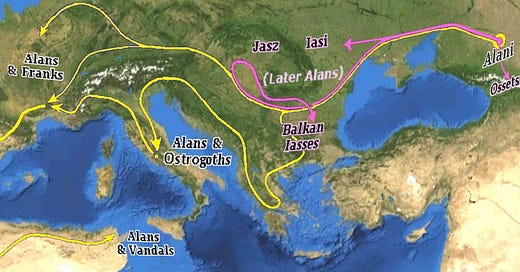






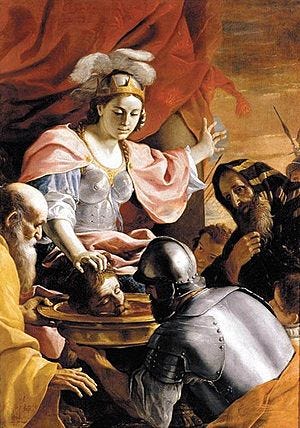
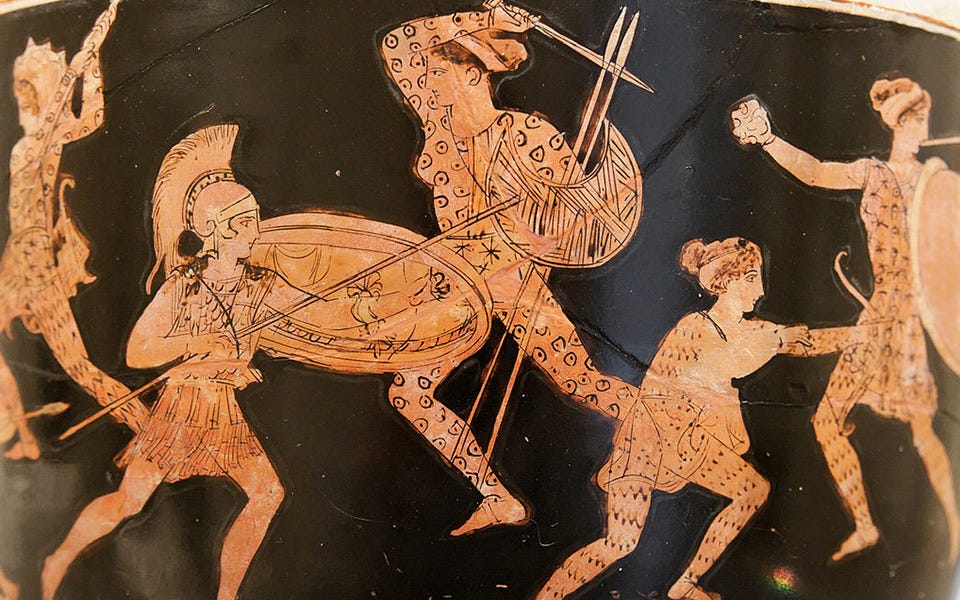
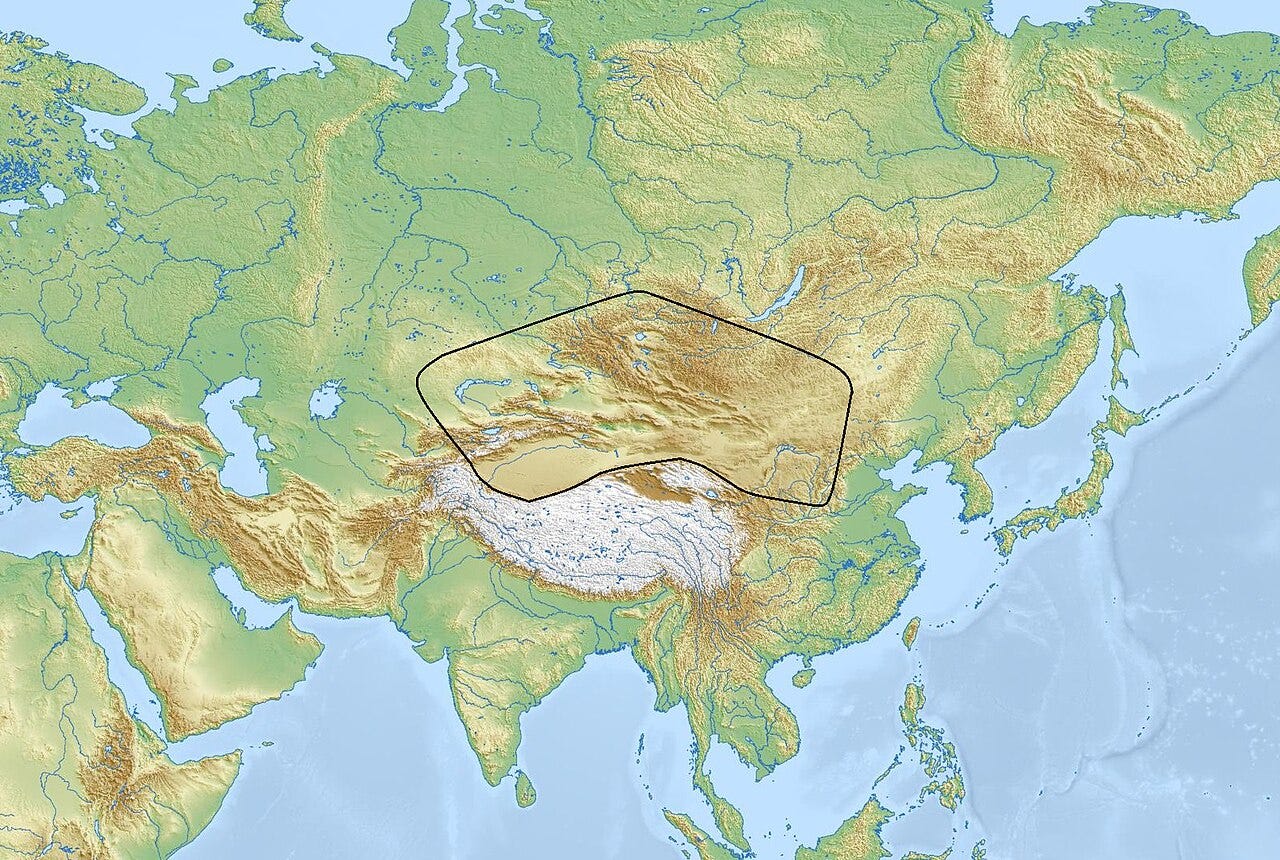
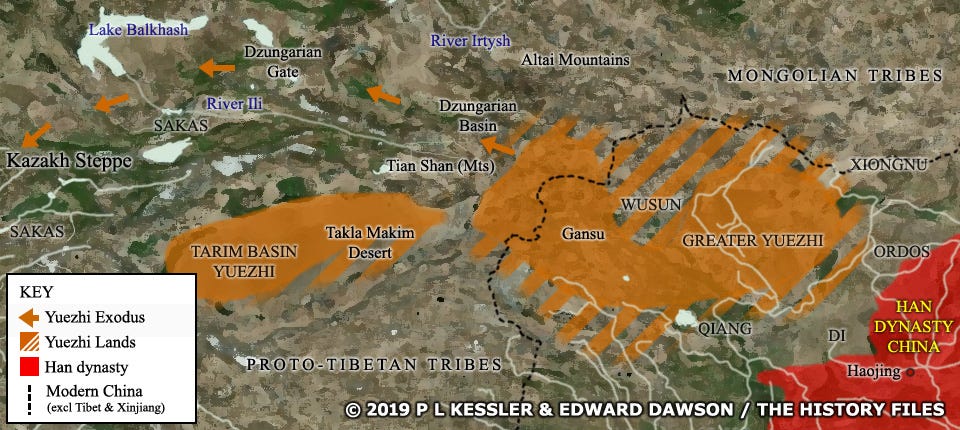

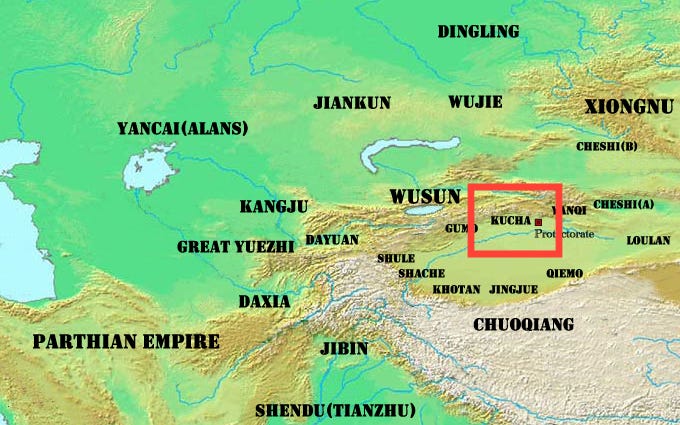


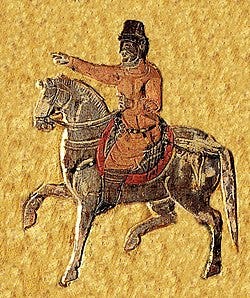

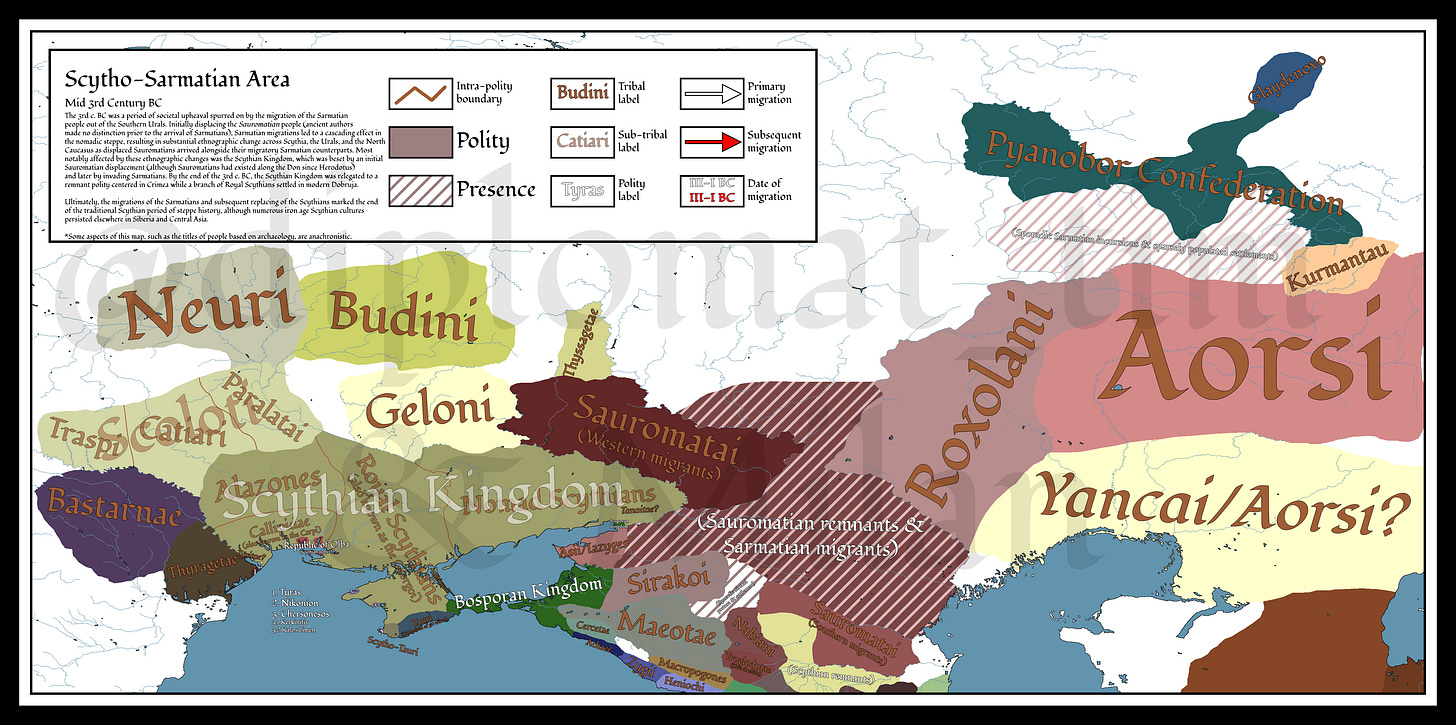
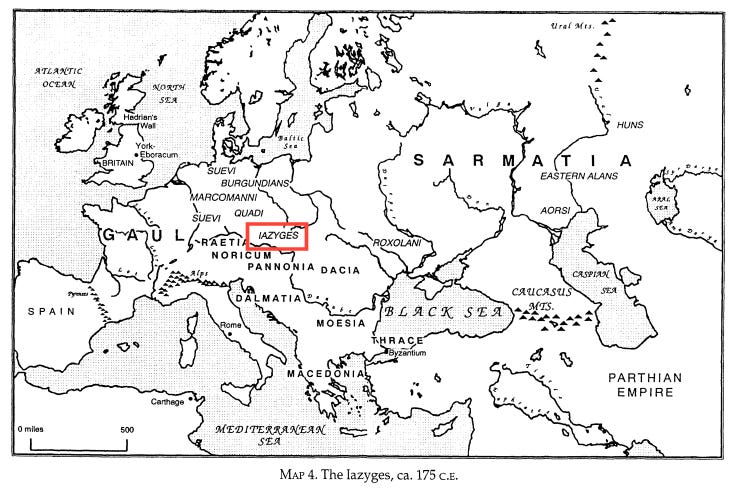



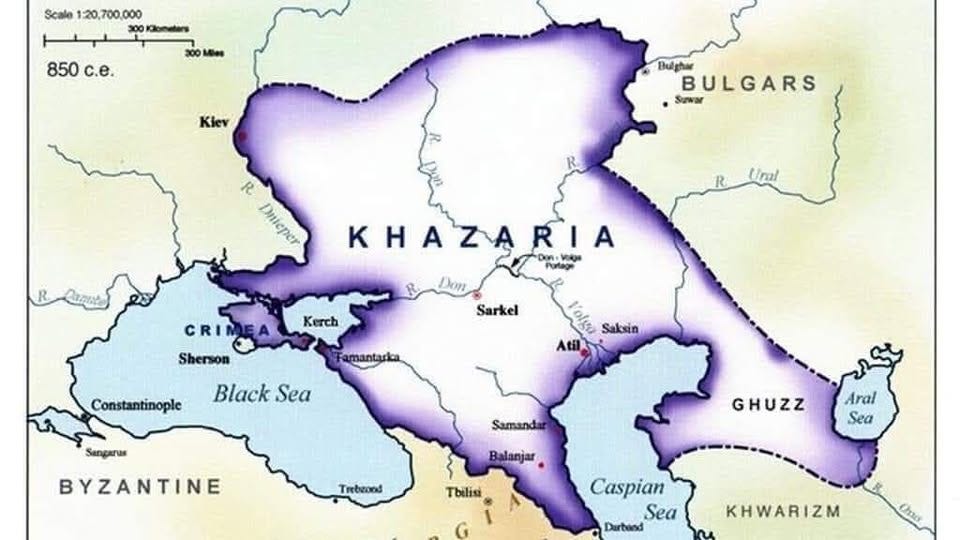
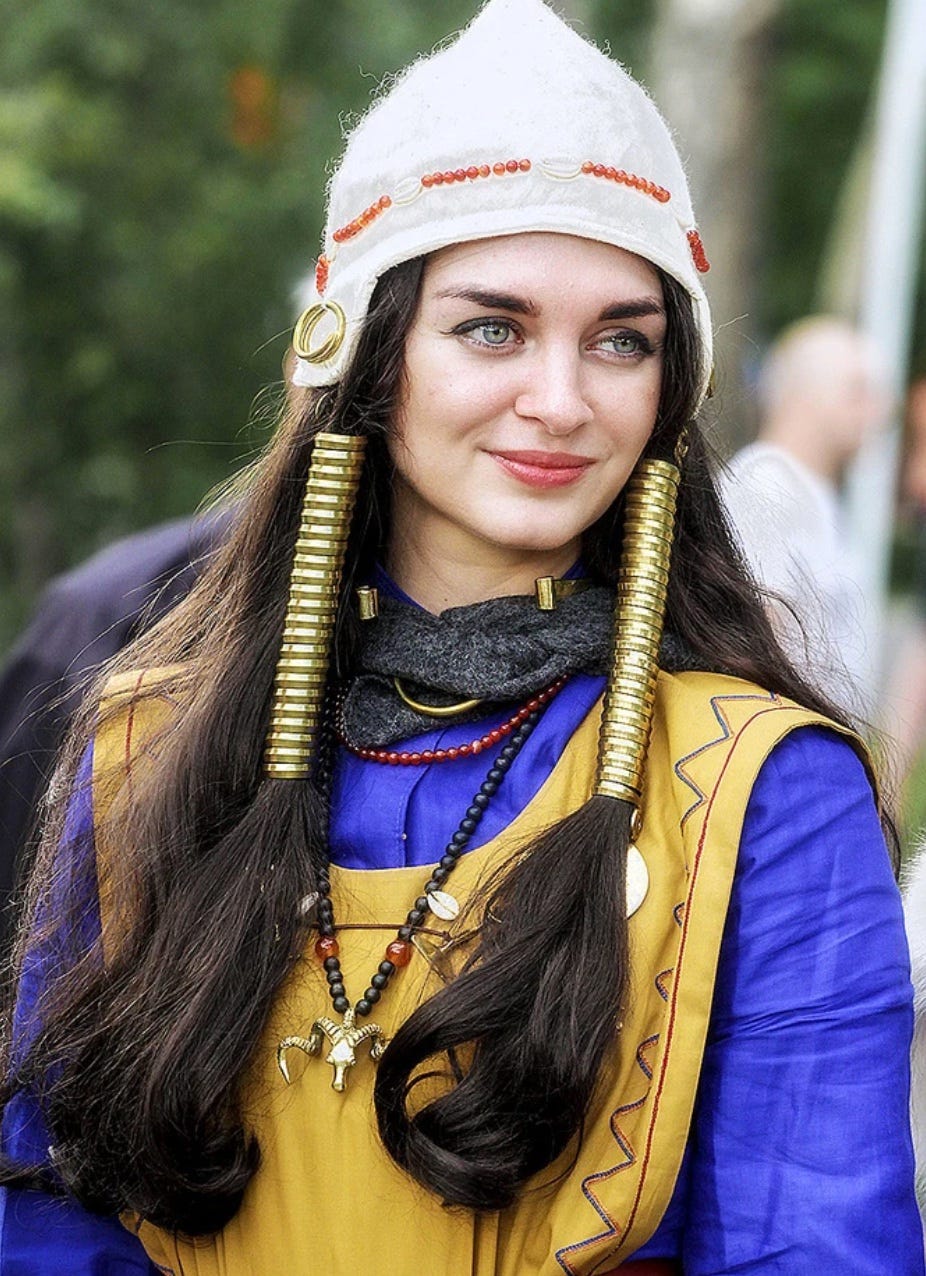
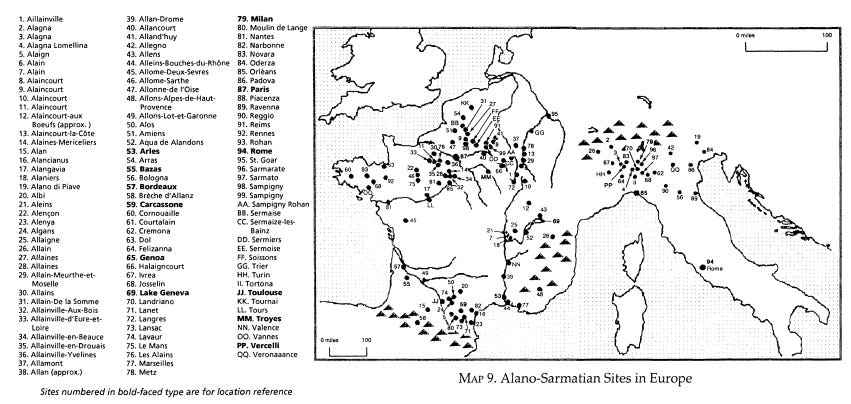

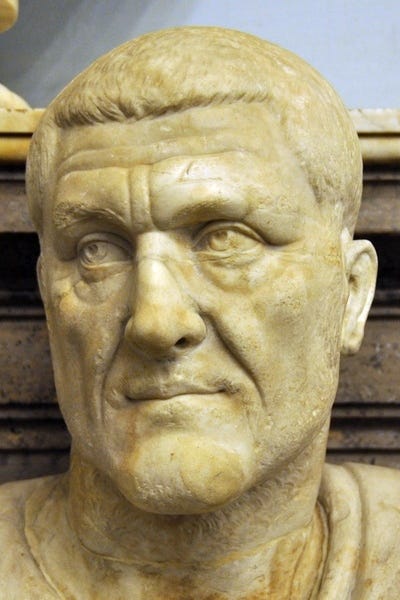
Wow, this alot to go into, but, Ashas, I would be honored if you took a look at my essay regarding the etymology of the words 'god' and 'Goth', and how/why they're so closely related. Highly relevant to this piece.
Your winged hussar video gave me goosebumps the other day, too. Great stuff
Another Aryan people with a similar reach, but who expanded earlier, are the Veneti. They are mostly ignored by conventional historiography, but their ethnonym is present in all of Ancient Europe since the end of the Bronze Age - From Brittany to Anatolia, through Central Europe.
Their ethnonym was similar to "Aryan" in its use and diffusion.
Informations about them are scarce, but recent archeological finds confirm that they were present along the Amber Road and may have formed an earlier wave of Aryan expansion before the Celts - they could even be their ancestors, due to how archeoc their language was.
If you'd like to know more, we have an article about them and personally know some historians here in Venetia.